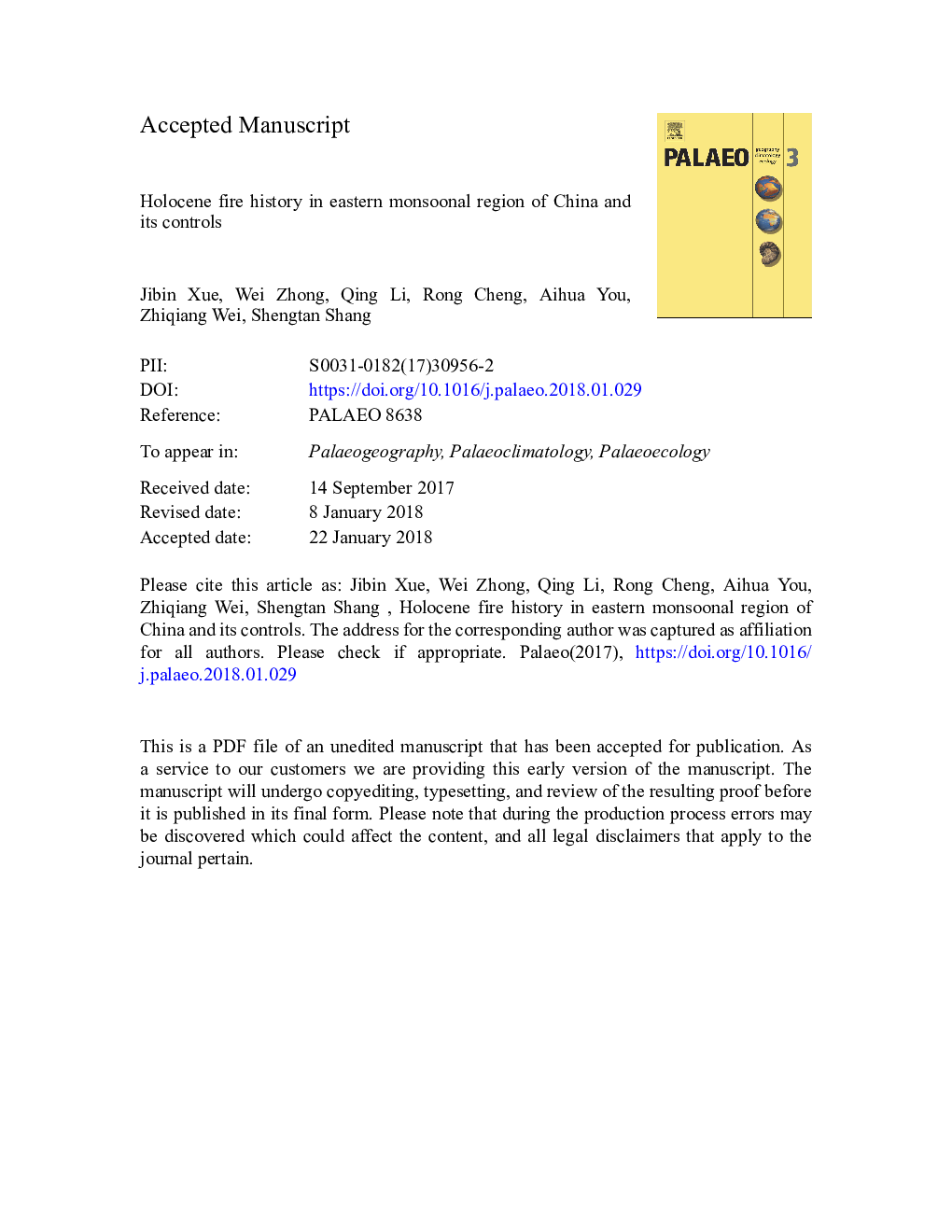| Article ID | Journal | Published Year | Pages | File Type |
|---|---|---|---|---|
| 8868285 | Palaeogeography, Palaeoclimatology, Palaeoecology | 2018 | 43 Pages |
Abstract
For the first time we synthesized the fire history for the eastern monsoonal region of China during the Holocene, through the combined analyses of paleofire indices including both charcoal and black carbon records from 14 localities available at present. Our results show that in eastern China fire activity was relatively higher before 9500â¯calâ¯yrâ¯BP, very low between 9500 and 7500â¯calâ¯yrâ¯BP, and evidently increased since 7500â¯calâ¯yrâ¯BP, reaching its maximum at about 2000â¯calâ¯yrâ¯BP. This general pattern of fire activity closely follows the Holocene effective moisture evolution in the eastern monsoonal China at an orbital timescale, i.e. more fires occurred during drier conditions, while less fire occurred during more humid conditions. These results suggest that the fire activity in eastern China were primarily driven by climate changes (i.e., variations of past moisture conditions) and monsoon-related changes in vegetation communities, ultimately forced by the Northern Hemisphere insolation (NHI) on orbital timescales over the Holocene. Our data also show that the fire activity increased concurrently with significant human development from the mid- to late-Holocene, possibly suggesting an intensified trend of human-induced fire activities since about 7500â¯years ago. Moreover, the fire activity in eastern China closely parallels the atmospheric CO2 concentration inferred from Antarctica ice-cores. Our synthesis will help to better understand the relationship between fire, climate and human activity at a variety of geographical scales.
Related Topics
Physical Sciences and Engineering
Earth and Planetary Sciences
Earth-Surface Processes
Authors
Jibin Xue, Wei Zhong, Qing Li, Rong Cheng, Aihua You, Zhiqiang Wei, Shengtan Shang,
